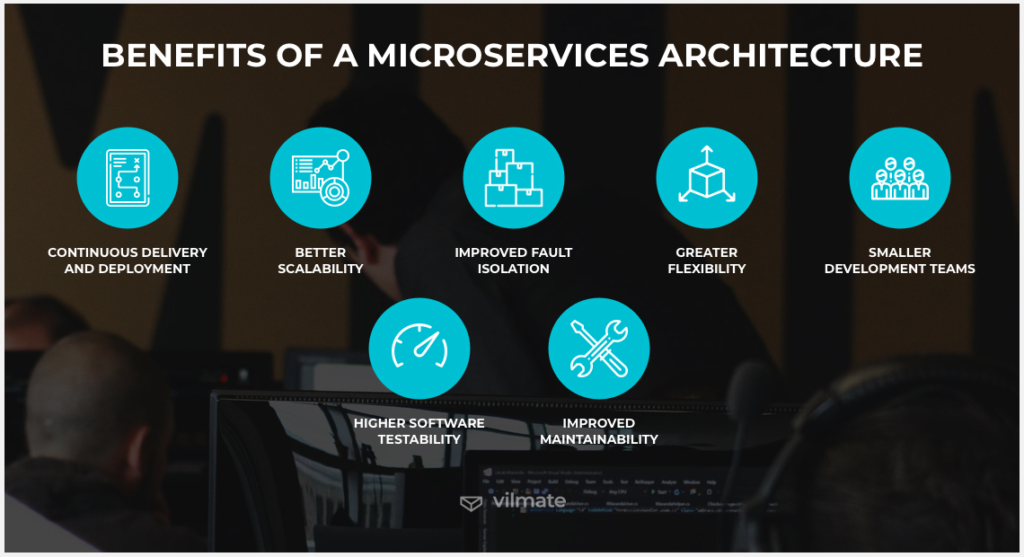
Introduction
Microservices architecture is a design approach in which an application is structured as an assembly of loosely coupled, independently deployable services. This model is gaining significant popularity in full-stack development due to its ability to offer scalability, flexibility, and ease of maintenance. Any Java full stack developer course offered in urban learning will have substantial coverage on how microservices architecture is used in full-stack application development.
Here is a look at the key benefits of using microservices architecture in full-stack development.
Microservices Architecture in Full Stack Development
As against traditional monolithic architectures; with all components tightly integrated, microservices architecture is an approach to full-stack application development in which an application comprising several services is broken down into smaller, independent services that work in tandem. Each service is self-contained and can be developed, deployed, and scaled independently. The microservices architecture enables communication between the components through lightweight APIs, usually via HTTP/REST or messaging queues.
This architecture offers developers the flexibility of choice. Developers are free to use different programming languages or frameworks for each service. It improves scalability, as each service can be scaled separately, which makes it well-suited for handling high traffic or resource-intensive tasks. Microservices also improve fault isolation—that is, the failure of one service does not necessarily crash the entire application, which ensures better resilience.
Application developers are keen on implementing microservices architecture for cloud-native and large-scale applications due to its flexibility, scalability, and ease of development and deployment. It suits businesses looking to build agile, maintainable, and scalable applications, ensuring efficient handling of evolving business requirements. It is increasingly becoming a skill much sought-after by developers enrolling in urban learning centres such as a full stack developer course in Bangalore.
Benefits of Microservices Architecture in Full Stack Development
Several benefits accrue from the separation of services; the basic strategy that microservices architectures adopt. Read the following sections that describe some of the key benefits. Developers who have worked on monolithic architectures will certainly be able to appreciate these benefits. If you are planning to enroll in a Java full stack developer course, ensure that the course has practice-oriented coverage on this useful technology.
Scalability
- Horizontal Scaling: Microservices allow individual services to be scaled independently based on demand. This is ideal for applications that experience varying traffic patterns, as resources can be allocated to high-demand services without affecting the entire system.
- Efficient Resource Utilisation: You can optimise resource usage by allocating only what is needed for each service, making the architecture cost-effective, especially when deploying in cloud environments.
Flexibility in Technology Stack
- Polyglot Programming: Each microservice can be developed using different programming languages, frameworks, or databases, allowing teams to choose the best technology suited for a specific task. This freedom enhances innovation and ensures that the most efficient tools are employed.
- Easier Technology Updates: Since services are decoupled, it’s easier to upgrade or replace technologies in one service without affecting others, promoting a modern and future-proof application.
Faster Development and Deployment
- Parallel Development: Different teams can work on individual services simultaneously, reducing development time. This parallelism accelerates project timelines, enabling faster releases and quicker iterations.
- Continuous Deployment: Microservices architecture supports continuous integration/continuous deployment (CI/CD) practices, allowing services to be updated and deployed independently. This leads to quicker feature releases and bug fixes.
Improved Fault Isolation and Resilience
- Reduced Risk of System Failure: In a microservices architecture, if one service fails, it doesn’t bring down the entire application. This isolation enhances the overall reliability of the system, as other services continue functioning normally.
- Better Error Handling: Each microservice can have its error-handling mechanisms, enabling quicker identification and resolution of issues.
Ease of Maintenance and Updates
- Simplified Codebase: Microservices break down complex applications into smaller, manageable services, making it easier to understand and maintain the code. This modularity reduces the cognitive load on developers and makes debugging more straightforward.
- Independent Updates: Updates and patches can be rolled out to specific services without affecting the entire application, resulting in less downtime and smoother maintenance processes.
Enhanced Security
- Granular Security Controls: Microservices allow for more fine-grained security policies, enabling different levels of access control and authentication for each service.
- Reduced Attack Surface: Since each service operates independently, a breach in one service doesn’t necessarily compromise the entire application, offering better overall security.
Better Support for DevOps and Agile Practices
- Alignment with Agile: Microservices align well with Agile methodologies, as they enable rapid development, testing, and deployment. This makes it easier to adapt to changing requirements and market demands.
- Improved DevOps Integration: Microservices facilitate smoother DevOps practices by allowing continuous monitoring, testing, and deployment, leading to faster and more reliable software delivery.
Scalability in Data Management
- Decentralised Data Storage: Each microservice can have its own database, leading to more efficient data management. This decentralised approach eliminates bottlenecks and allows teams to optimise data storage solutions for specific service needs.
- Flexibility in Data Models: Different microservices can use different data models, allowing developers to choose the most efficient storage and retrieval methods for their specific use cases.
Best-Practice Tips
Managing microservices can be complex, requiring robust orchestration and the use of several monitoring tools. However, some tips will alleviate the complexity of this task. While these tips are best learned by practice, a standard java full stack developer course will include several such guidelines recommended by experienced mentors. Following are some useful tips developers must be aware of and observe in their professional roles:
- Design services around business capabilities
- Choose the right communication protocols
- Implement a robust API gateway
- Embrace automation and CI/CD
- Use containerisation and orchestration
- Design for fault tolerance and resilience
- Implement service discovery
- Centralise logging and monitoring
Conclusion
The microservices architecture offers numerous benefits in full-stack development, including scalability, flexibility, faster deployment, resilience, and ease of maintenance. By breaking down applications into smaller, manageable services, microservices empower full-stack developers to build robust, adaptable, and efficient applications that can evolve with changing business requirements and technological advancements. For application developers, attending a full stack developer course in Bangalore and such cities, focusing on how microservices architecture can be developed and deployed, will empower them with a skill that will greatly help them simplify their tasks.
Business Name: ExcelR – Full Stack Developer And Business Analyst Course in Bangalore
Address: 10, 3rd floor, Safeway Plaza, 27th Main Rd, Old Madiwala, Jay Bheema Nagar, 1st Stage, BTM 1st Stage, Bengaluru, Karnataka 560068
Phone: 7353006061
Business Email: enquiry@excelr.com



